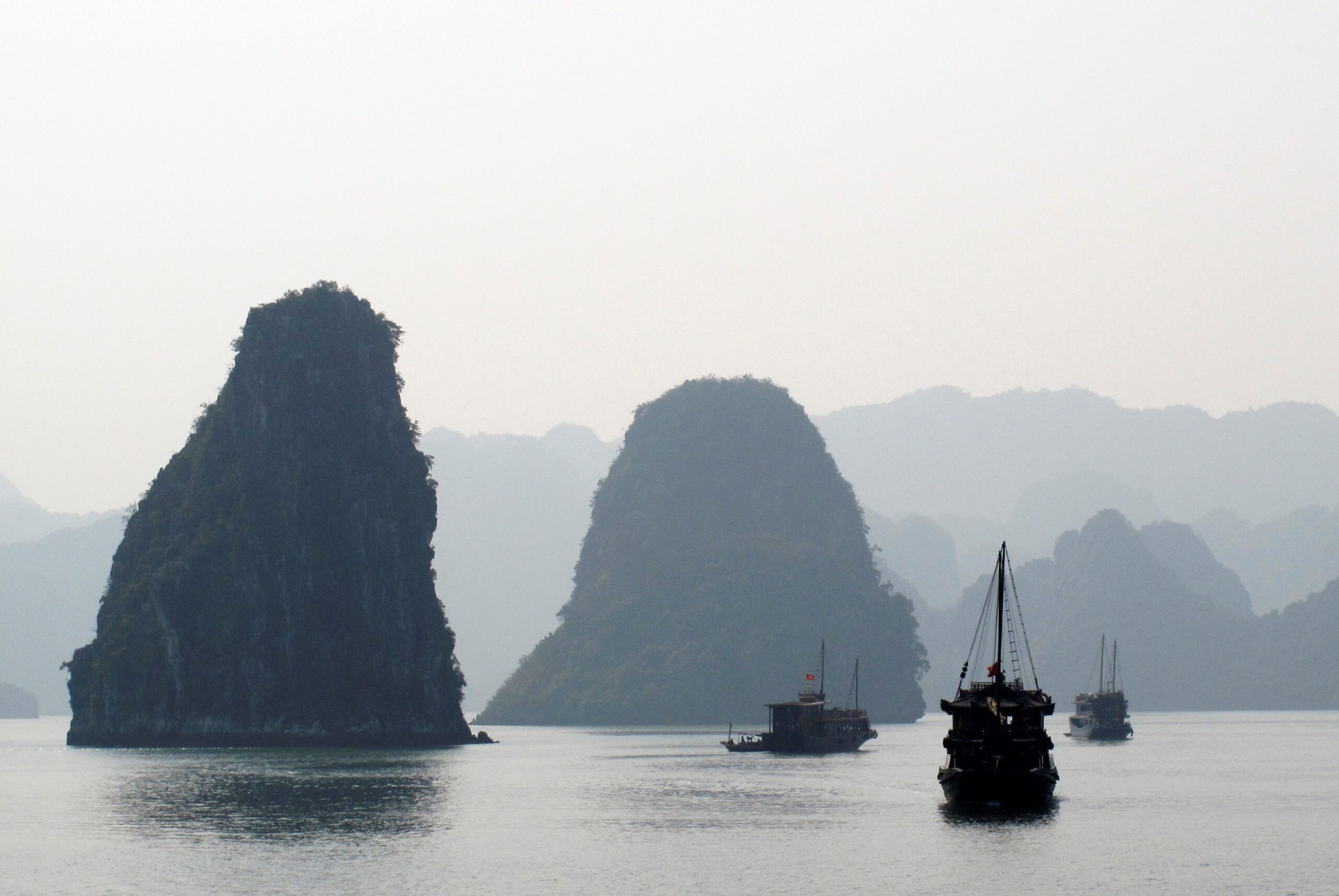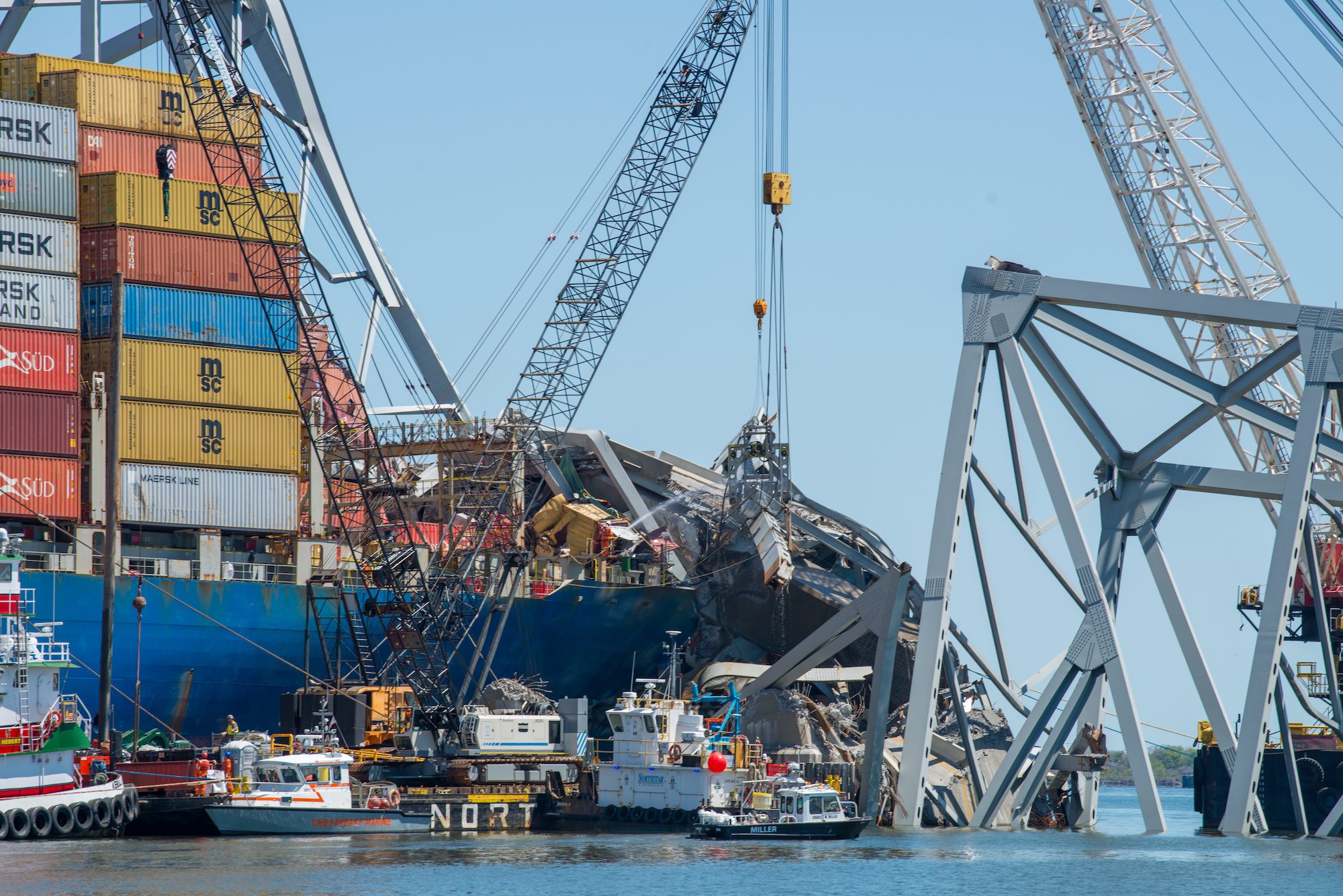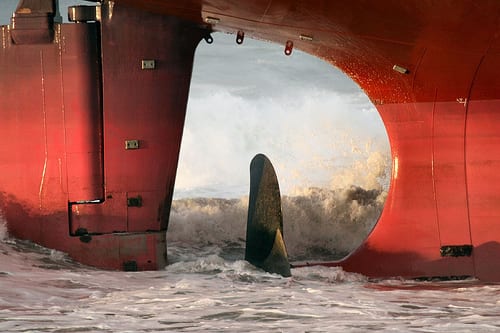
After pouring over the media reports and available facts I’ve decided the story can best be said by our resident maritime experts, gCaptian’s r. Here is MarkL‘s insightful and humorous take:
Observations of a relative indicates that the second gale ( which was more from the south and which coincided with a reasonably high tide) pushed her off the reef and 200-300 yards north, into even shallower water.
This will make life interesting for the salvage effort [being performed by Svitzer Salvage, a division of A.P. Moller-Maersk], as she is now between the shoreline and a line of shallow reefs offshore.
If this effort succeeds in such an exposed spot in winter, it will be one of those quiet epics of salvage we hear so little about in general media. A joke presently being bandied about Newcastle is that the city should forbid salvage, buy the wreck and convert it into ‘apartments with a 360 degree ocean view to sell to idiots from Sydney’.
Ian brings us a Salvage update:
Salvage specialists saying very little except that they are still in “assessment/planning” stage. They confirm that there is a damage to outer hull on starboard side and some seepage of seawater. They also advise that there is a metre gap between outer and inner hull structures and that fuel and lubricants tanks are not in the same area. A specialized salvage tug has arrived from Sydney and another is due in port from Melbourne on Wednesday. It is surmised that fuel etc will be removed prior to any attempt to drag the ship off. It is interesting that the Pasha Bulker is lying roughly parallel to the causeway that connects to Nobbies head and the resulting beach formed against the causeway. The ship is said to “flat bottomed” and firmly lodged on sand rather than adjacent reef, sand that no doubt complicates possible salvage depending on wind and sea over the next few days.
My take? I standby my request for answers regarding the extent to which the human element and incident chain played in the grounding. It is also apparent that modernization of the fleet with advancements like dynamic positioning, real time weather data and redundancy of systems is starting to positively mitigate the damage resulting from a maritime incident. To clarify there are two type of prevention systems; active and passive. The former being systems that require positive effort. In this case did the crew used their satellite comms to discuss the weather patterns with meteorologists or did they simply ignore the port authority’s warnings? Did the captain use his AIS to identify the surrounding ships and call fellow captains via GMDSS to discuss the situation? Did they have access to and use real-time weather data or wait for a 2-dimensional weather fax?
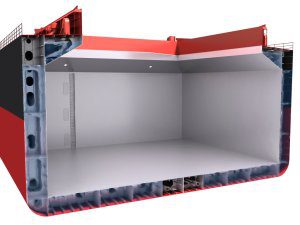 These situations should be a wake up call for the industry to re-evaluate procedure. The titanic saved countless subsequent lives by making the industry think safety and develop SOLAS regulations. The Exxon Valdez made us think about design enhancements most notably double hulls and a series of aviation tragedies linked to human error were the impetus for developing Bridge Resource Management. Each advancement has lead to significant improvements in safety and provided clear, positive results.
These situations should be a wake up call for the industry to re-evaluate procedure. The titanic saved countless subsequent lives by making the industry think safety and develop SOLAS regulations. The Exxon Valdez made us think about design enhancements most notably double hulls and a series of aviation tragedies linked to human error were the impetus for developing Bridge Resource Management. Each advancement has lead to significant improvements in safety and provided clear, positive results.
Ships Captains have historically needed to be strong in their opinions and self reliant but times are changing. We now live in a small, connected world. The negative result are micro management by marine superintendents detached from the situation and real time monitoring by both regulatory and news organizations. The positive results? Most mariners would say there are few, but why?
In a world where experts and amateurs can work together to write encyclopedias and master mariners from Australia can visit gCaptain to discuss topics with mariners thousands of miles away (in real time!) I question that self-reliance is still the most important trait for a ship’s master. Instead captains need to embrace technology and work on their social skills. They need to use real time monitoring to understand conditions and communication technology to call field experts
The phone number of the man who’s the foremost expert on heavy weather anchoring needs to be posted on every bridge and then conferenced in with the local pilot and a meteorologist, each sharing information on same computer screen. Then the ship’s master should be able to log-on to a conference call with the nearby captains.
Decisiveness and the ability to make the final decision, however, can not change. A captain needs to be able to make decisions even when contrary to expert opinion without fear of jail time. He also needs support and his crew needs passive safety measures. The reason an environmental catastrophe has not occurred in Newcastle is the same reason the 100% of the passengers were able to abandon the “Empress of the North”, the ship’s double hull, an expensive but invaluable passive feature.
Finally I would like to say that without internet connections, bridge technology and investment in ideas little of this can happen. Company’s must take action at a level surpassing that of master mariners and encourage advancement of ideas.
We have the opportunity to increase the scope of Bridge Team Management beyond the bridge and if we do so the savings in life and the environment will easily surpass the investment.
For more of gCaptain’s Coverage of the Pasha Bulker click HERE.
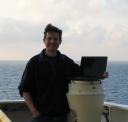
John Konrad is a USCG licensed Master Mariner of Unlimited Tonnage currently working as Chief Mate aboard a 865′ ship in the Gulf of Mexico. Since graduating from SUNY Maritime College he has sailed in all 4 of the worlds oceans and reports from his ship via satellite.
Related Links:
Pasha Bulker Links:
UPDATE: A new gCaptain post to this story has been written – Pasha Bulker Incident Report – Nearly Unbelievable

 Join The Club
Join The Club




 These situations should be a wake up call for the industry to re-evaluate procedure. The titanic saved countless subsequent lives by making the industry think safety and develop SOLAS regulations. The Exxon Valdez made us think about design enhancements most notably
These situations should be a wake up call for the industry to re-evaluate procedure. The titanic saved countless subsequent lives by making the industry think safety and develop SOLAS regulations. The Exxon Valdez made us think about design enhancements most notably 


